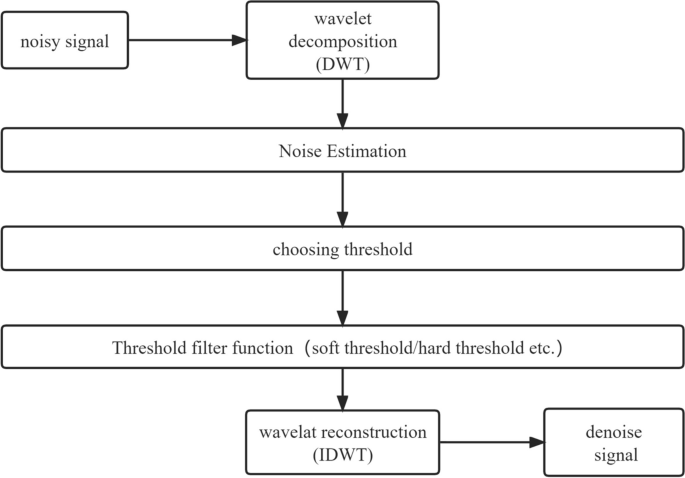An improved wavelet threshold denoising approach for surface electromyography signal
IF 1.9
4区 工程技术
Q3 ENGINEERING, ELECTRICAL & ELECTRONIC
Eurasip Journal on Advances in Signal Processing
Pub Date : 2023-10-25
DOI:10.1186/s13634-023-01066-3
引用次数: 0
Abstract
Abstract Background The surface electromyography (sEMG) signal presents significant challenges for the dynamic analysis and subsequent examination of muscle movements due to its low signal energy, broad frequency distribution, and inherent noise interference. However, the conventional wavelet threshold filtering techniques for sEMG signals are plagued by the Gibbs-like phenomenon and an overall decrease in signal amplitude, leading to signal distortion. Purpose This article aims to establish an improved wavelet thresholding method that can filter various types of signals, with a particular emphasis on sEMG signals, by adjusting two independent factors. Hence, it generates the filtered signal with a higher signal-to-noise ratio (SNR), a lower mean square error (MSE), and better signal quality. Results After denoising Doppler and Heavysine signals, the filtered signal exhibits a higher SNR and lower MSE than the signal generated from traditional filtering algorithms. The filtered sEMG signal has a lower noise baseline while retaining the peak sEMG signal strength. Conclusion The empirical evaluation results show that the quality of the signal processed by the new noise reduction algorithm is better than the traditional hard thresholding, soft thresholding, and Garrote thresholding methods. Moreover, the filtering performance on the sEMG signal is improved significantly, which enhances the accuracy and reliability of subsequent experimental analyses.

一种改进的小波阈值去噪方法用于表面肌电信号
摘要背景表面肌电图(sEMG)信号由于其信号能量低、频率分布宽以及固有的噪声干扰,给肌肉运动的动态分析和后续检查带来了重大挑战。然而,常规的表面肌电信号小波阈值滤波技术存在类似吉布斯现象和信号幅度整体下降的问题,导致信号失真。本文旨在建立一种改进的小波阈值方法,通过调整两个独立的因素,可以滤波各种类型的信号,特别是表面肌电信号。因此,它产生的滤波信号具有更高的信噪比(SNR)、更低的均方误差(MSE)和更好的信号质量。结果对多普勒信号和重辛信号进行降噪处理后,滤波后的信号比传统滤波算法产生的信号具有更高的信噪比和更低的MSE。过滤后的表面肌电信号具有较低的噪声基线,同时保留了表面肌电信号的峰值强度。结论经验评价结果表明,新降噪算法处理后的信号质量优于传统的硬阈值法、软阈值法和Garrote阈值法。此外,对表面肌电信号的滤波性能也得到了显著提高,从而提高了后续实验分析的准确性和可靠性。
本文章由计算机程序翻译,如有差异,请以英文原文为准。
求助全文
约1分钟内获得全文
求助全文
来源期刊

Eurasip Journal on Advances in Signal Processing
ENGINEERING, ELECTRICAL & ELECTRONIC-
CiteScore
3.40
自引率
10.50%
发文量
109
审稿时长
3-8 weeks
期刊介绍:
The aim of the EURASIP Journal on Advances in Signal Processing is to highlight the theoretical and practical aspects of signal processing in new and emerging technologies. The journal is directed as much at the practicing engineer as at the academic researcher. Authors of articles with novel contributions to the theory and/or practice of signal processing are welcome to submit their articles for consideration.
 求助内容:
求助内容: 应助结果提醒方式:
应助结果提醒方式:


